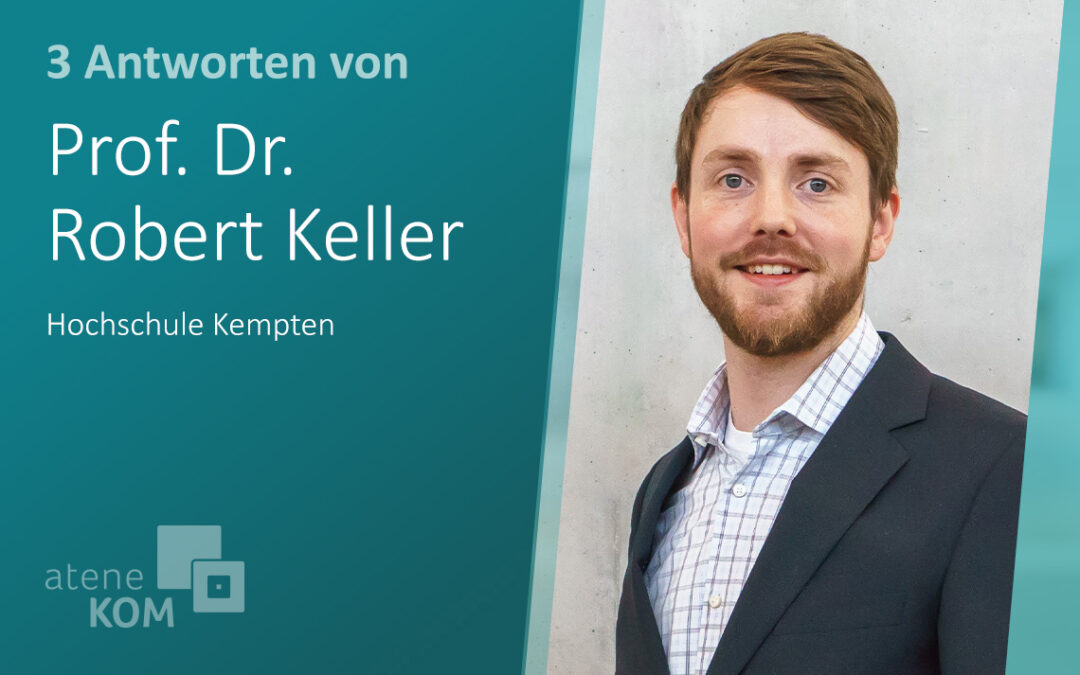On the aconium future journey, we meet people for whom digitalization is more than just a buzzword. Three questions for Prof. Dr. Robert Keller, Professor of Information Management & Digitalization at the Faculty of Tourism Management at Kempten University of Applied Sciences, and a senior manager at the Institute for Sustainable and Innovative Tourism Development, the Core Competence Center for Finance & Information Management and the Business Informatics branch of Fraunhofer FIT.
Mr. Keller, why does the Allgäu rely on digital technologies for tourism?
In tourism, we have spent years trying to get as many people as possible to a particular region. This approach was successful – but it pushed traffic and residents to their limits, leading to less acceptance among the population. Our university is now trying to find out how to counteract these “overcrowding” effects. To this end, we are developing digital management concepts, for example, in order to equalize these crowds. If we want to implement such digital concepts, this requires many measures: The first step is to set up a sensor system to obtain this data automatically. The second step is to store, process and visualize all this data. In the third step, we then use this data to create a forecast of where and how much will be happening and when. This is how digital technologies help us to actively recognize overcrowding. But the exciting question is: how can we take countermeasures?
There are many concepts for this, from small-scale decisions when finding a route to large-scale control of vacation planning. At our university, for example, we have developed an approach designed to encourage people to switch from cars to buses. This bus then takes holidaymakers to destinations that are not overcrowded but are still attractive to them. Simply by creating an offer that can be booked, we are providing targeted guidance. There are many such approaches to combining tourism and local mobility needs. The advantage of digital approaches is that they are often the gentlest for everyone involved – as long as you think carefully about how you can design them.
How are your concepts linked to the “Bayern Cloud Tourismus” project?
The Bayern Cloud is a data hub for tourism data. For example, sensor data and other relevant data is made available there in order to address precisely the kind of problems I mentioned earlier. It’s also always about providing information. The Bayern Cloud is a single point of truth, so to speak, for tourism data in Bavaria. Of course, the data from our projects will also end up on the Bayern Cloud later on.
How can we increase the use and acceptance of digital technologies among the population?
Generally speaking, the topic of measurement and sensor technology is still in its infancy in this area. And sensor technology is also still incredibly expensive. That stands in the way of widespread use in Germany. On the other hand, we also need people to take advantage of our services. We know this from electronic parking garage signs: There’s always at least one person who doesn’t believe that all the parking spaces are occupied and drives in anyway. Then they’re lucky because someone drives out at that moment. This also reinforces the image that the signs are not correct … Or take vacationers from the region who already have their tour in mind anyway and are not necessarily influenced by digital visitor guidance. This is all part of the topic of acceptance. It will be some time before such measures are widely accepted and have an impact. What helps is talking, talking, talking. For example, we have now set up a Community of Practice in order to discuss the issues with the contact persons from the projects and share knowledge. And at tourism events, we promote the acceptance of these measures and show that many things and projects are happening – but that they are not necessarily fast movers. But listening is just as important: When people complain, there is always a reason for it – then you have to look for solutions together.

